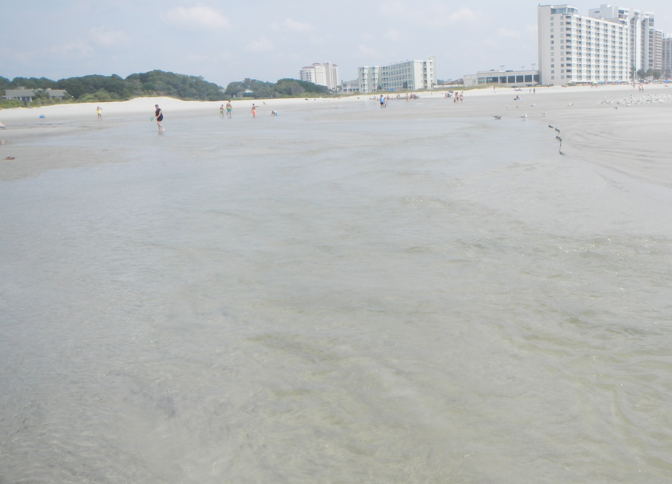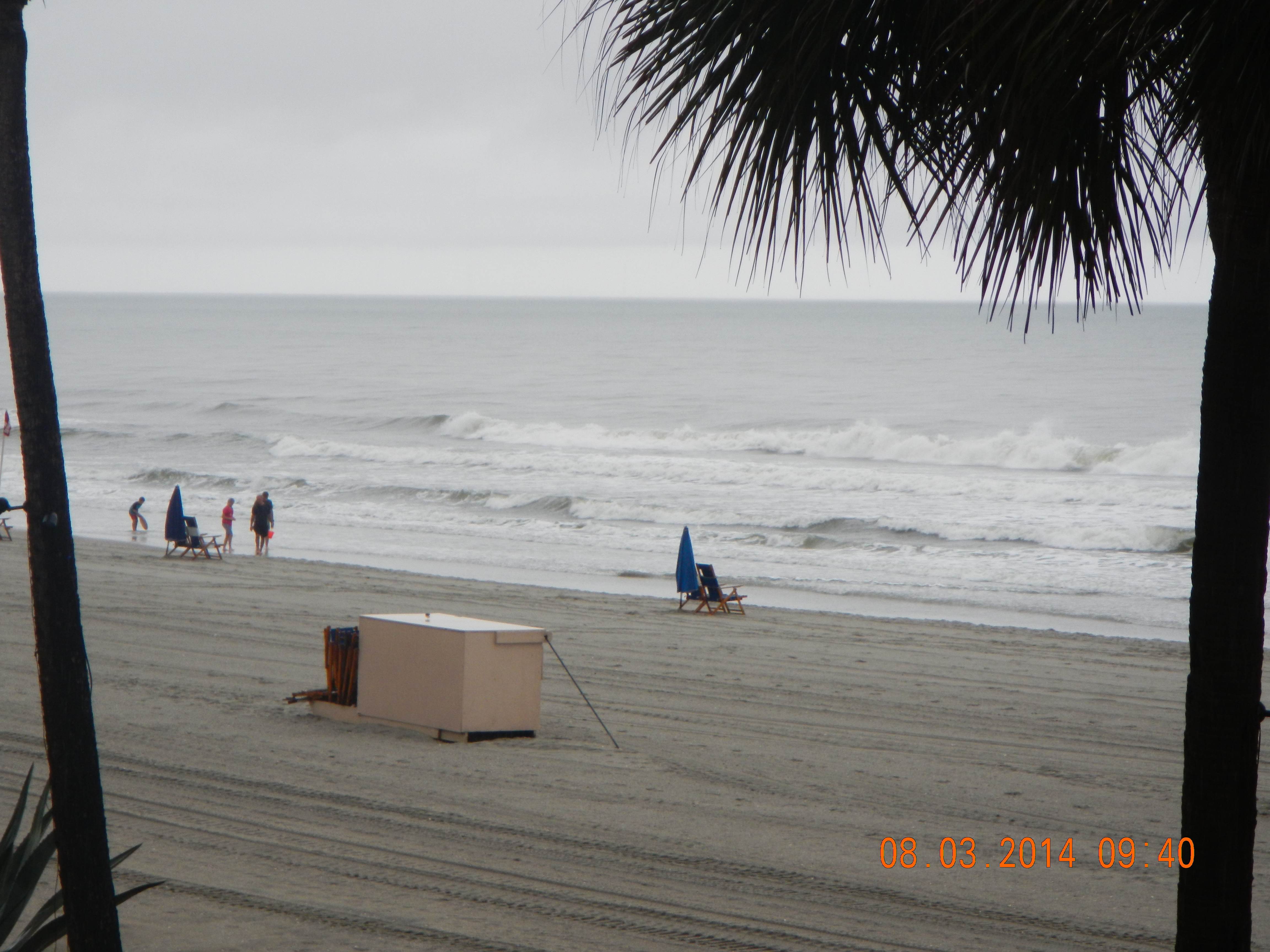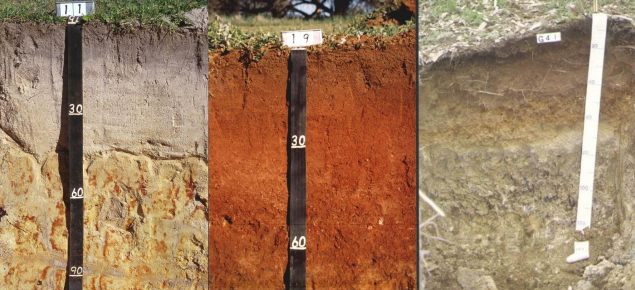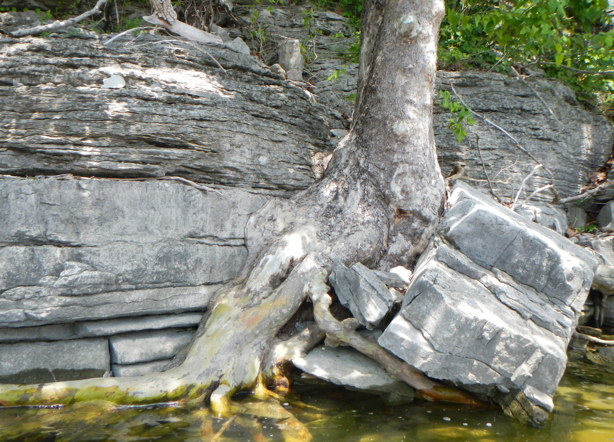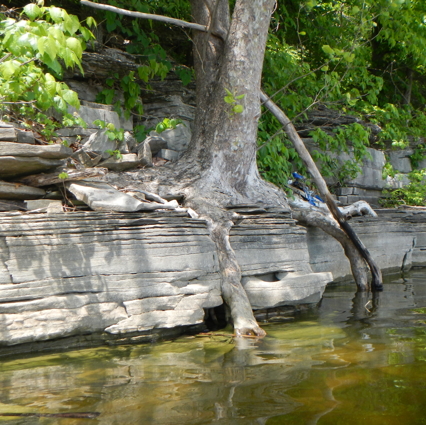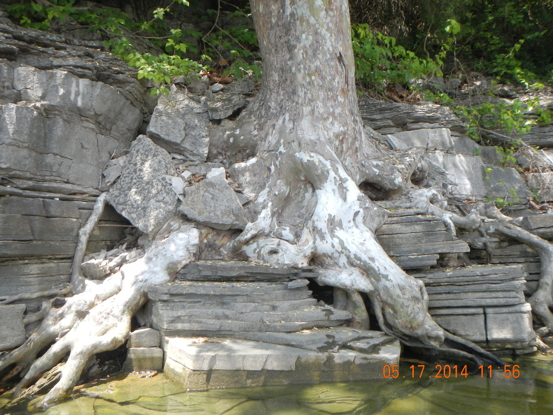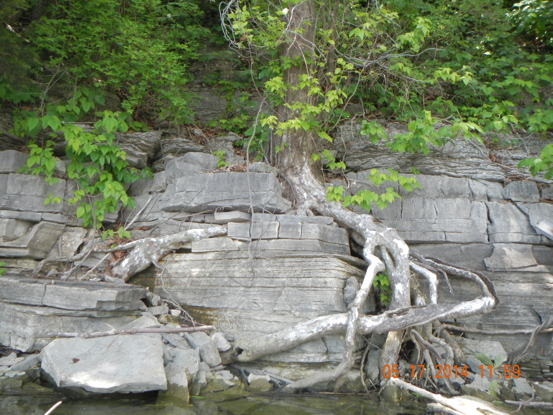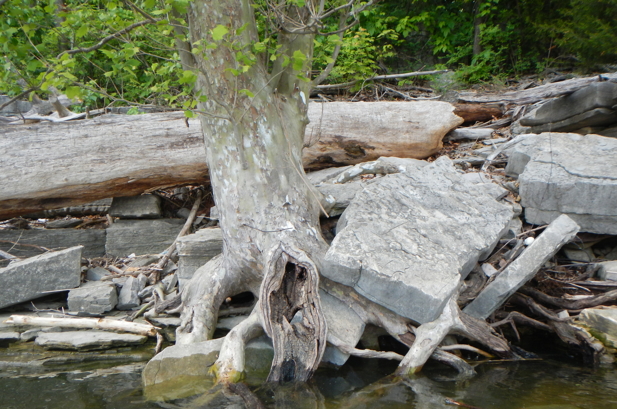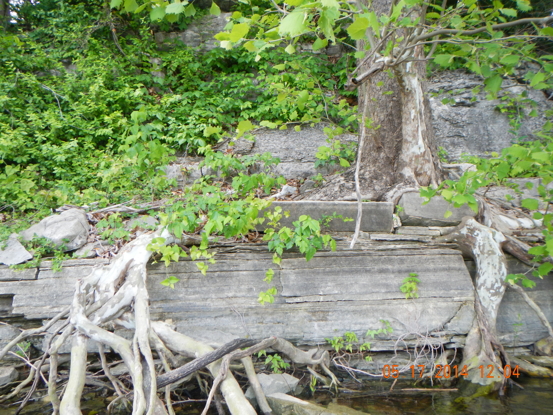The long-speculated collapse of the west Antarctic ice sheet is underway, and also appears to be on an unstoppable trajectory. According to the recently-published research documenting this (Joughin et al., 2014; McMillan et al., 2014; Rignot et al., 2014) it will likely take a couple of centuries for the ice sheets to transfer their water to the sea (in the case of land ice). Among other things, this means that already rising sea levels will accelerate (see this NASA summary discussion on past meltwater pulses and their effects on sea level: http://www.giss.nasa.gov/research/briefs/gornitz_09/)
One of the many problems associated with ongoing and accelerating future sea level rise—both practical and scientific—involves the response of rivers near the coast. Rapid sea level rise means a rapid rise in the base level for the rivers. How will they respond? The only things we can say for sure is that the sudden (from a geological viewpoint) rise in base level will trigger geomorphic, hydrologic, and ecological responses, and that these responses will be highly variable from river to river. There are certainly some general principles and laws—any fluvial geomorphology text will have them—governing how fluvial systems respond to base level change. But these responses are also strongly influenced by the environmental framework (regional topography, geologic setting, lithology, rock, soil, and sediment types, vegetation, climate, and so on) and by their own histories—affects of both past and contemporary sea level, climate, hydrological, and other changes.
My own work on rivers of the Gulf of Mexico (GoM) coastal plain in the U.S.—all profoundly affected by sea-level change during the Quaternary, and by rising sea-levels in recent history—illustrates this variability. The Trinity, Neches, and Sabine Rivers are adjacent to each other in southeast Texas and southwest Louisiana. Their environmental frameworks and histories are about as similar as you are likely to see—in fact, they are really all part of a single larger river system, with their confluences now beneath Sabine Lake estuary (Neches and Sabine) or the GoM continental shelf. Yet, even these neighboring, similar river systems exhibit significant differences in how they have responded to Holocene and recent changes in climate and sea-level. This is reflected in, among other things, their avulsion (channel-shifting) regimes, patterns of channel-floodplain connectivity, and the morphology of the lower river valleys and deltas. These differences are linked to antecedent (inherited) morphological features within the river valleys, historical happenstance, and local disturbances such as tectonic movements or logjams (see the “Phillips” citations below, which also reference the work of others on these rivers and GoM coastal plain in general).
While this region provides useful lessons for investigating this topic, I can’t propose the GoM rivers as a general model—how could I, when they differ so much among themselves? The point is that no one scenario or predictive model will be applicable all affected rivers—even if you limit it to certain types or classes of river. We have to pay attention to the local details, so that we can understand what constrains their behavior, and what might amplify or dampen base level-driven changes.
Models of all kinds can be useful in identifying possibilities, along with studies of contemporary processes and recent historical responses. The paleoenvironmental record, which in many cases includes effects of past meltwater pulse-driven sea-level rise, can help a lot. Just because something has happened before does not mean that it will happen again, but we can take it as a law that if it did happen, it can happen.
Another approach is to look at analogs. One of these is dams and reservoirs, which raise the local base level from the channels upstream just as sea-level rise does. The analogs are not exact, or perfect, of course, due to the different rates or paces of base level change and different environmental factors, but can still expand our catalog of fluvial responses. Most studies of geomorphic impacts of dams have focused on downstream impacts. And most studies of reservoir sedimentation have focused entirely on the lakes, not upstream areas. So this is a topic ripe for more research.
Lake-head deltas are common, and the channels upstream commonly take on the multi-channel, anastamosing forms common in aggrading systems. But certainly this is not always the case. In my “home” lake (Herrington, Kentucky), for example, the tributary streams are bedrock-controlled. Due to the dominant nature of erosion of these channels (weathering along joints and bedding planes in the limestone, followed by “plucking” at high flows), these are typically characterized by a series of bedrock steps, often featuring waterfalls or cascades. When Herrington Lake was filled (in 1927), the lower valleys of the tributary creeks were flooded. However, because of the steep slopes of the streams and the bedrock steps, the backwater effects of the lake only occur up to the next step upstream—in every case I’ve seen so far, no more than a few 10s of meters. Steep bedrock rivers, or those with pronounced knickpoints in the lower reaches, are thus likely to have more localized impacts than, say, low-gradient coastal plain rivers.
Stepped surfaces of various kinds, and some very subtle, are not uncommon in lower river reaches even without bedrock control, due to both alluvial and marine terraces. One can conceive of highly localized impacts downstream of a “step” or knickpoint, with little or no change upstream—until water levels breach the feature. Then a rapid inland or upstream expansion of effects can occur. The sedimentary record of several GoM systems, for instance, shows evidence of this sort of thing (e.g., Anderson and Rodriguez, 2008).
The recent reports from Antarctica make it clear that its time to redouble our efforts in the study of fluvial responses to rising base level, as changes are likely to be fast and furious in coming decades.
-------------------------
Anderson, J.B. and A.B Rodriguez, eds., Response of Upper Gulf Coast Estuaries to Holocene Climate Change and Sea-Level Rise (pp. 121-146). Boulder, CO: Geological Society of America Special Paper 443.
Joughin, I., B. E. Smith, B. Medley. Marine Ice Sheet Collapse Potentially Underway for the Thwaites Glacier Basin, West Antarctica. Science, 2014; DOI: 10.1126/science.1249055
McMillan, M., A. Shepherd, A. Sundal, K. Briggs, A. Muir, A. Ridout, A. Hogg, D. Wingham. Increased ice losses from Antarctica detected by CryoSat-2. Geophysical Research Letters, 2014; DOI: 10.1002/2014GL060111
Phillips, J.D., 2014. Anastamosing channels in the lower Neches River valley, Texas. Earth Surface Processes and Landforms. DOI: 10.1002/esp.3582.
Phillips, J.D., 2013. Watershed fragmentation in coastal plain rivers. Physical Geography 34: 273-292.
Phillips, J.D. 2011. Universal and local controls of avulsions in southeast Texas rivers. Geomorphology 130: 17-28.
Phillips, J.D. 2009. Avulsion regimes in southeast Texas rivers. Earth Surface Processes and Landforms 34: 75-87.
Phillips, J.D., Slattery, M.C. 2008. Antecedent alluvial morphology and sea level controls on form-process transition zones in the lower Trinity River, Texas. River Research and Applications 24: 293-309.
Rignot, E., J. Mouginot, M. Morlighem, H. Seroussi, B. Scheuchl. Widespread, rapid grounding line retreat of Pine Island, Thwaites, Smith and Kohler glaciers, West Antarctica from 1992 to 2011.. Geophysical Research Letters, 2014; DOI: 10.1002/2014GL060140

